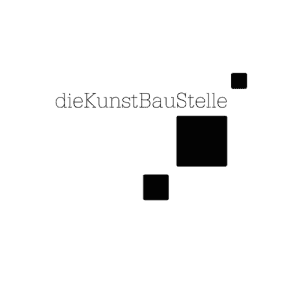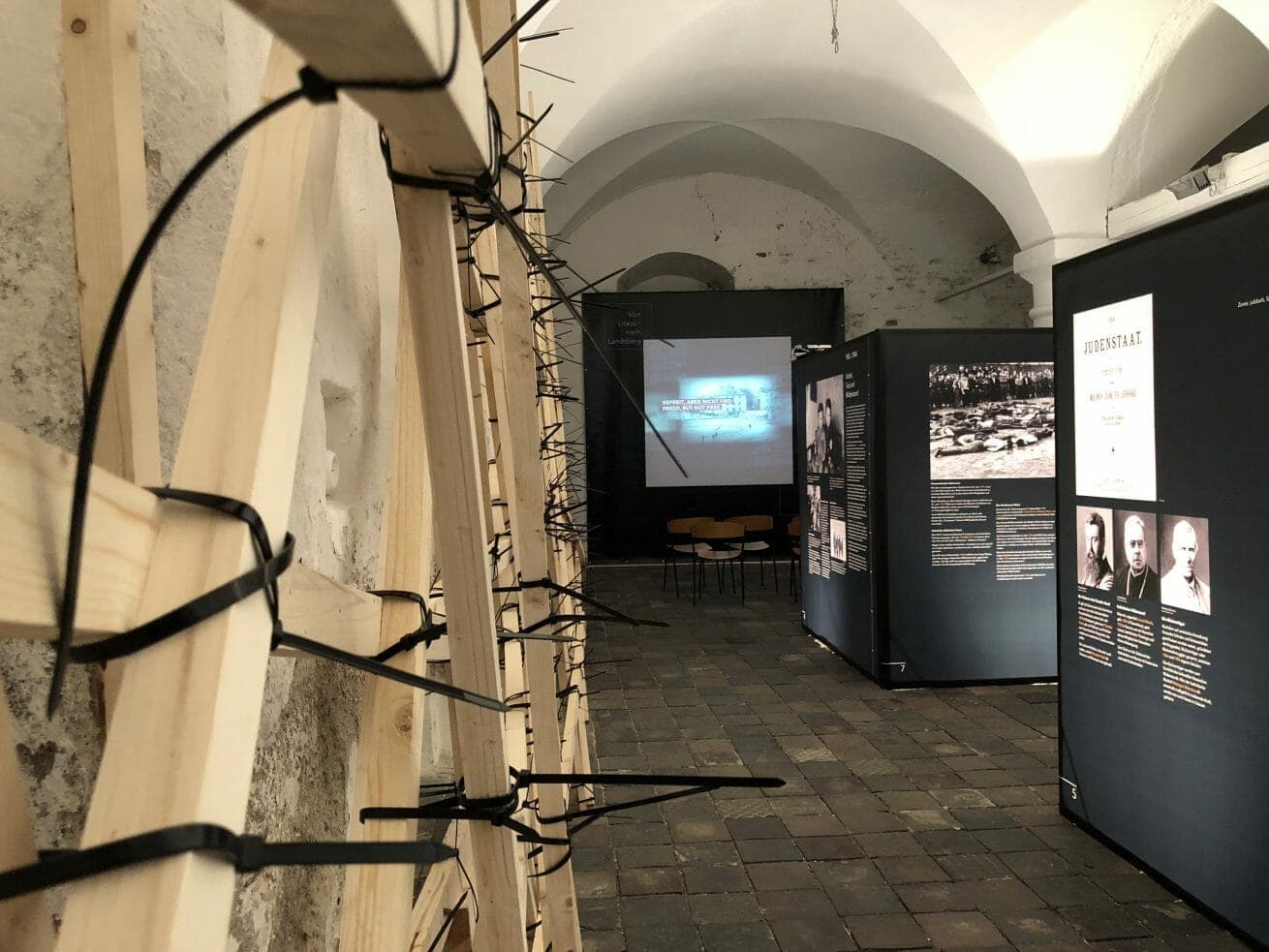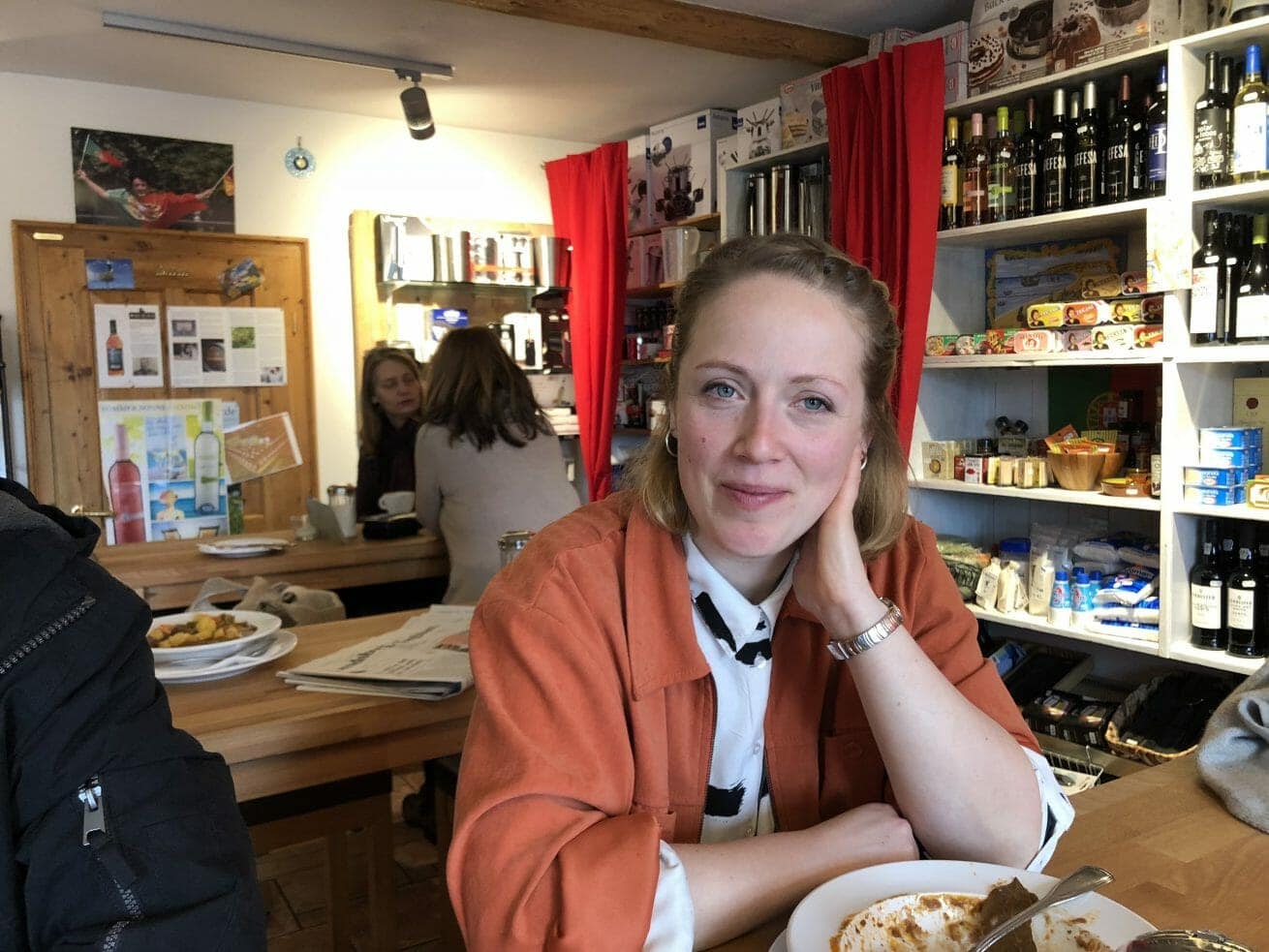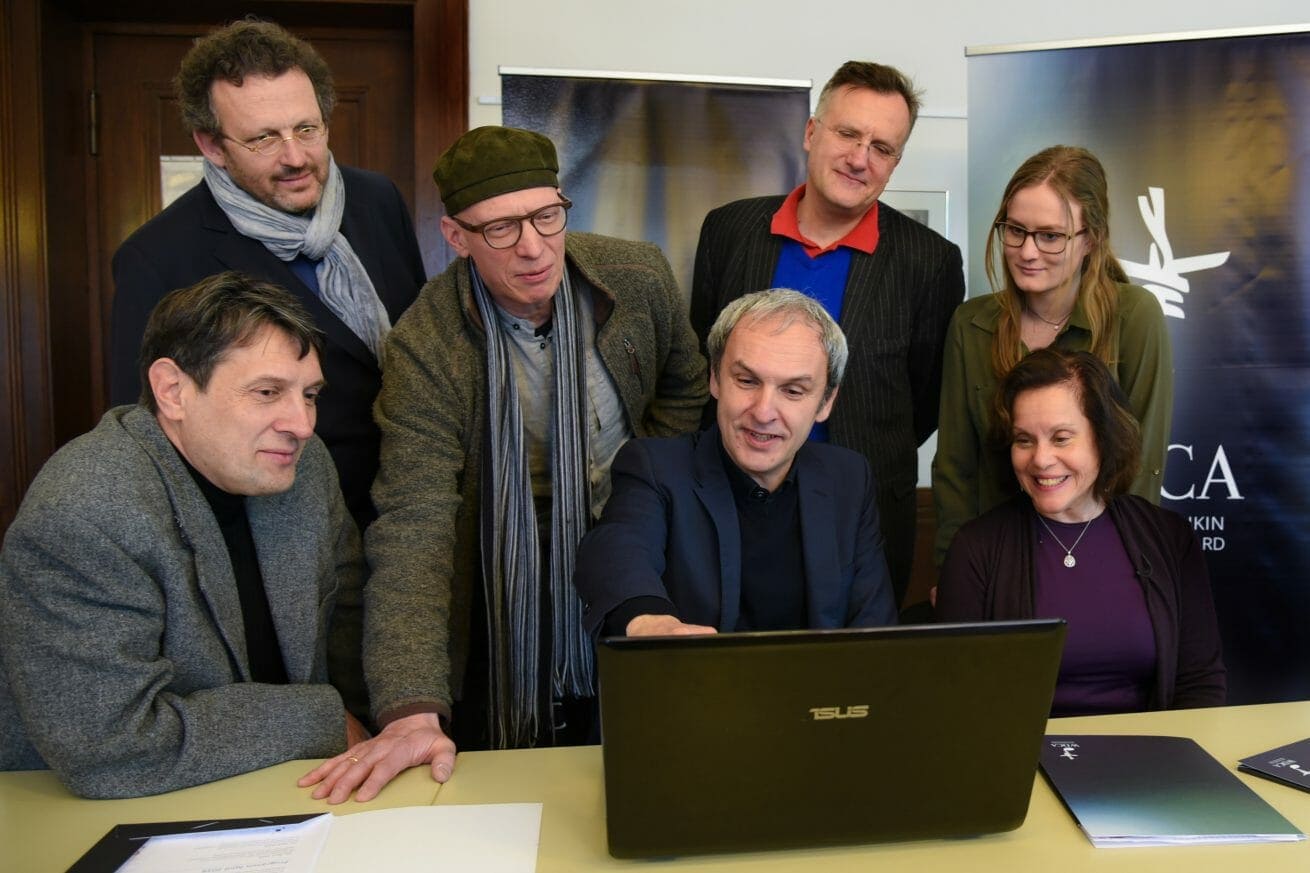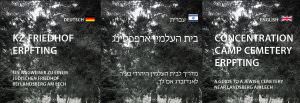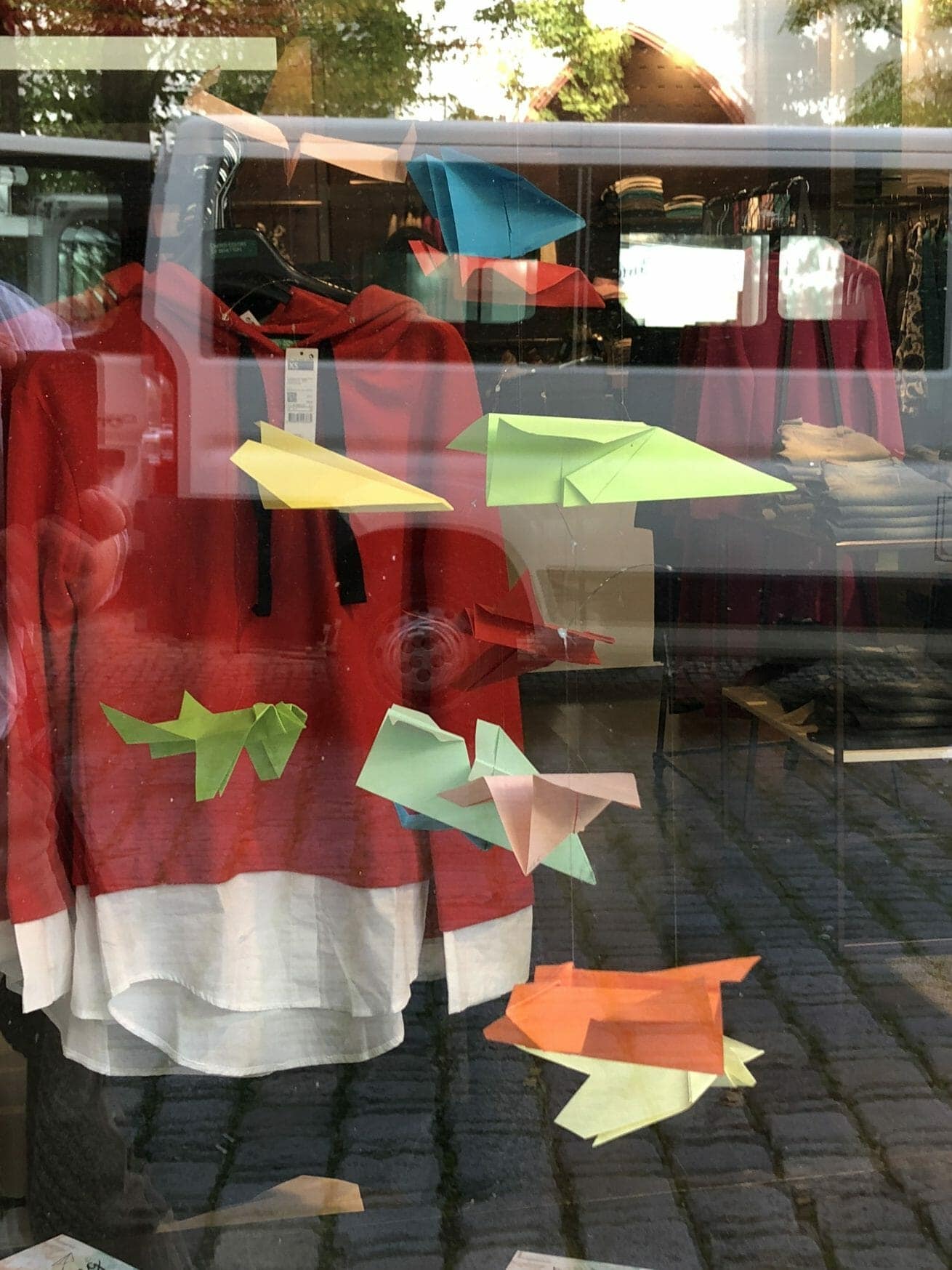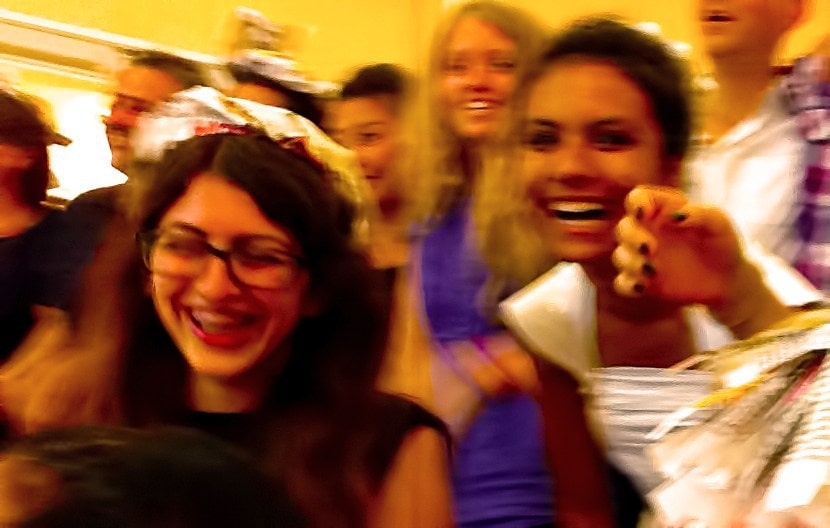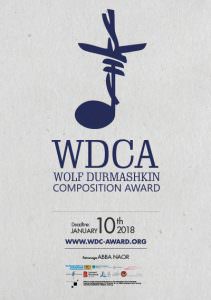An einem verschneiten Februartag traf sich die Jury des Wolf-Durmashkin-Kompositionspreises unter den imposanten Säulen und marmorverkleideten Fluren der Münchner Musikschule, um über die Preisträgern zu entscheiden.
Der Preis ist einem jüdischen Musiker der in einem Konzentrationslager in Estalnd ermordet wurde, gewidmet. Deswegen ist es ist von historischer Bedeutung, diesen Preis in einem Gebäude zu vergeben, in dem das Arbeitszimmer von Adolf Hitler, dem sogenannten „Führerbau“ . Wenn man durch die Korridore geht erzeugen die Schritte auf dem Marmorboden eine harten percussiven Klang. MAn kommt nich tumhin, über die Vergangenheit des Gebäudes nachzudenken und sich die Charaktere aus Geschichtsbüchern am selben Ort vorzustellen.
Trotz seiner nationalsozialistischen Geschichte ist das Gefühl des Gebäudes nicht beklemmend. Hinter den schweren Holztüren erklingt die Musik der Studenten. Die Studenten eilen mit Instrumenten auf dem Rücken vorbei, bleiben am Fuß der großen Treppen stehen und lachen und plaudern. Es ist sichtabr, daß das Gebäude nicht mehr der Vergangenheit angehört.
Die Brücke zwischen Vergangenheit, Gegenwart und Zukunft war ein zentrales Thema während des gesamten WDCA-Wettbewerbs. Mit einem Konzert soll das Gedenken an die Geschichten bewußt werden. Der Kompositionspreis ist gedacht, um diese Geschichten mit der Gegenwart zu verbinden und durch den Einsatz junger Musiker und Komponisten eine Verbindung in die Zukunft zu schaffen.
Die Jury bestand aus einer Gruppe von sieben Personen, unter ihnen Musikprofessoren, ein Orchesterdirigent, ein Geigenbauer, eine NAchfarhing von Wolf Durmaskin und einer Schülerin. Nach einigen ersten Treffen, freundlichen Einführungen und Fotoshootings, äußerte die Jury freundlich, aber fest ihren Wunsch, allein und abgeschlossen zu tagen. Kameras und Filmausrüstung wurden in den Korridor transportiert. Nach ungefähr 2 Stunden öffnete sich die schwere Holztür, aber die Aufregung war kurzlebig, sie machten nur einen kurzen Pause und würden danach ihre geheime Arbeit wieder aufnehmen.
Schließlich, als das Team im Korridors den Versuchungen des Buffets nicht länger widerstehen könnten, öffneten sich die Türen und ein Raum von lächelnden, müden Gesichtern gab glücklich bekannt, daß sie ihre Gewinner gefunden hatten.
Um Verzerrungen jeglicher Art zu vermeiden, wurden die Identitäten der Komponisten während des Entscheidungsprozesses geheim gehalten, aber sobald die Gewinner ausgewählt waren, wurden die entsprechenden Codes in einen Computer gestanzt und, wie durch Magie, erschien ein Foto des Urhebers der Komposition auf der Leinwand, gefolgt von ihren persönlichen Daten, jedes Mal mit Jubel und Aufregung getroffen.
Die vielleicht unerwartetste Reaktion war jedoch, als das Foto der Gewinnerin des zweiten Platzes, Rose Miranda Hall, auf der Leinwand erschien und eine schockierte Stimme aus dem hinteren Teil des Raumes quietschte „Ich kenne sie“. Viele solcher Fälle von zufälligen Verbindungen und unerwarteten Verbindungen scheinen das ganze Wochenende zu unterstreichen, doch für Jessica, eine Praktikantin aus england, war es ganz besondere Überraschung. Sie hatte im gleichen Jahr und oft die gleiche Klasse wie Rose an der Universität in York besucht.
In einem der vielen verschiedenen Gespräche wurden die Nationalitäten einiger Einträge diskutiert. „Es gibt einen Eintrag aus Israel“, meinte Wolfgang, „wäre es nicht besonders, wenn sie gewonnen würde“, alle stimmten ihm zu,. Aber es war offen, den die Jury wussten nichts über die Komponisten. So waren ihre Entscheidung unbeeinflußt. Als die Identität des Komponistin, die Jury einstimmig zum Sieger gewählt hatte, bekannt gegeben wurde, fühlte er sich deshalb wie ein Wundr an: Es war Bracha Bdil aus Israel.
Die endgültigen Ergebnisse für den Kompositionspreis:
1. Preis: BRACHA BDIL Israel
2. Preis: ROSE MIRANDA HALL, England
3. Preis: OTTO WANKE, Tschechien, lebt in Wien
Ein besonderer und unvergesslicher Tag für alle.
Es sind ausgezeichneten Kompositionen und wir sehr gespannt darauf, sie am 10. Mai ain Landsberg klingen werden.
Text: Jessica Kettle
Photo: Conny Kurz
